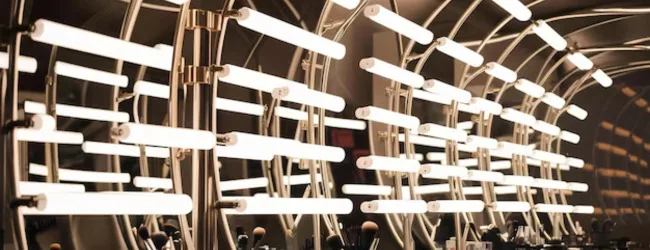Table of contents
- Why is LED Bulb Manufacturing Business is Easy to Start?
- 1. Market Research and Feasibility Analysis
- 2. Business Plan Development
- 3. Legal and Regulatory Compliance
- 4. Setting Up the Manufacturing Unit
- 5. Quality Control and Testing
- 6. Marketing and Sales Strategy
- 7. Financial Management
- Key Points to Remember
- Need Expert Guidance?
- Conclusion
- Frequently Asked Questions (FAQs)
The demand for energy-efficient lighting solutions is surging, making the led bulb manufacturing business a lucrative venture in 2025. With increasing government initiatives promoting energy conservation and rising consumer awareness, the LED market is poised for significant growth. This article provides a comprehensive guide to launching a highly-profitable LED bulb manufacturing business, tailored for the Indian market, incorporating essential SEO strategies for maximum visibility.
Why is LED Bulb Manufacturing Business is Easy to Start?

The global shift towards sustainable energy solutions is accelerating, and at the heart of this transformation lies the humble LED bulb. In 2025, the led bulb manufacturing business isn’t just a viable venture; it’s a strategic move poised for exponential growth. Why now?
- Government Initiatives and Policies:
- India’s government is aggressively promoting energy efficiency through initiatives like the UJALA (Unnat Jyoti by Affordable LEDs for All) scheme. These policies create a consistent and growing demand for LED lighting.
- Stringent energy efficiency standards and regulations are pushing consumers and industries towards LED adoption, phasing out traditional incandescent and CFL bulbs.
- Government tenders and projects for street lighting, public buildings, and infrastructure development are heavily reliant on LED solutions.
- Rising Energy Costs and Consumer Awareness:
- Escalating electricity prices are driving consumers to seek energy-saving alternatives. LED bulbs consume significantly less energy, resulting in substantial cost savings over time.
- Increased awareness of environmental issues and the benefits of energy efficiency is fueling consumer demand for sustainable lighting solutions.
- Technological Advancements and Cost Reduction:
- LED technology is constantly evolving, leading to improved efficiency, longer lifespan, and enhanced features.
- The cost of LED components and manufacturing has significantly decreased, making LED bulbs more affordable and accessible to a wider market.
- The Indian government is also promoting local manufacturing through the “Make in India” initiative, which reduces import costs and provides various benefits to local manufacturers.
- Market Growth Potential:
- The Indian LED lighting market is projected to experience substantial growth in the coming years, driven by urbanization, infrastructure development, and increasing disposable incomes.
- The replacement market for traditional bulbs is vast, providing a steady stream of demand.
- The growing demand for smart lighting solutions, which integrate LED technology with IoT (Internet of Things), presents a significant opportunity for innovation and market expansion.
1. Market Research and Feasibility Analysis

- Understanding Market Size and Growth:
- Dive deep into market research reports from reputable organizations like IBEF, CRISIL, and industry-specific research firms.
- Analyze historical data, current trends, and future projections to assess the market’s growth potential.
- Segment the market based on product types (e.g., residential, commercial, industrial), applications (e.g., indoor, outdoor), and geographical regions.
- Identifying Target Audience:
- Create detailed customer profiles, including demographics, psychographics, and purchasing behaviors.
- Understand the specific needs and preferences of each target segment.
- For example, residential customers may prioritize affordability and energy savings, while industrial customers may focus on durability and performance.
- Analyzing Competitors:
- Conduct a SWOT (Strengths, Weaknesses, Opportunities, Threats) analysis of your competitors.
- Evaluate their product portfolios, pricing strategies, distribution channels, and marketing efforts.
- Identify gaps in the market that you can exploit.
- Assessing Supply Chain:
- Map out the entire supply chain, from raw material sourcing to product distribution.
- Evaluate the reliability and cost-effectiveness of potential suppliers.
- Consider establishing long-term relationships with key suppliers to ensure a stable supply of raw materials.
- Feasibility Study:
- Develop detailed financial projections, including startup costs, operating expenses, revenue forecasts, and profitability analysis.
- Conduct sensitivity analysis to assess the impact of various factors on your business’s profitability.
- Determine the break-even point and payback period for your investment.
2. Business Plan Development
- Executive Summary:
- Write a concise and compelling overview of your business, highlighting its key features and competitive advantages.
- Company Description:
- Clearly define your company’s mission, vision, and values.
- Describe your company’s legal structure, ownership, and management team.
- Market Analysis:
- Provide a comprehensive analysis of the market, including market size, growth potential, target audience, and competitive landscape.
- Products and Services:
- Describe your product line in detail, including specifications, features, and benefits.
- Highlight the unique selling propositions (USPs) of your products.
- Include any planned future products or services.
- Marketing and Sales Strategy:
- Outline your marketing and sales plan, including branding, advertising, public relations, and sales channels.
- Detail your online and offline marketing strategies.
- Operations Plan:
- Describe your manufacturing processes, quality control procedures, and logistics.
- Include details about your production capacity, inventory management, and distribution network.
- Financial Projections:
- Develop detailed financial statements, including income statements, balance sheets, and cash flow statements.
- Provide a clear explanation of your assumptions and projections.
- Management Team:
- Highlight the qualifications and experience of your management team.
3. Legal and Regulatory Compliance
- Business Registration:
- Choose the appropriate legal structure for your business (sole proprietorship, partnership, private limited company).
- Register your business with the appropriate government authorities.
- GST Registration:
- Obtain GST registration to comply with India’s tax laws.
- BIS Certification:
- Ensure that your LED bulbs meet BIS standards for quality and safety.
- Obtain the necessary certifications from the Bureau of Indian Standards.
- Pollution Control Board Clearance:
- Obtain clearances from the Pollution Control Board to ensure that your manufacturing operations comply with environmental regulations.
- Factory License:
- If setting up a manufacturing unit, obtain a factory license from the relevant state government authorities.
💡 Pro Tip: If you want to start a business but have too many doubts, connect with a food business expert from Boss Wallah for guidance – https://bw1.in/1116
4. Setting Up the Manufacturing Unit

- Location Selection:
- Consider factors like proximity to raw materials, transportation infrastructure, availability of skilled labor, and government incentives.
- Machinery and Equipment:
- Invest in high-quality machinery and equipment from reputable suppliers.
- Ensure that your machinery is efficient, reliable, and capable of meeting your production requirements.
- Raw Materials:
- Source high-quality raw materials from reliable suppliers.
- Establish quality control procedures to ensure that your raw materials meet your specifications.
- Skilled Labor:
- Hire skilled technicians, engineers, and production workers.
- Provide training and development opportunities to ensure that your workforce is competent and motivated.
5. Quality Control and Testing
- Implement Stringent Quality Control Measures:
- Establish quality control procedures at every stage of the manufacturing process.
- Use statistical process control (SPC) techniques to monitor and control quality.
- Establish a Testing Laboratory:
- Set up a well-equipped testing laboratory to evaluate the performance, durability, and safety of your products.
- Conduct photometric and electrical testing to ensure that your products meet BIS standards.
- Conduct Regular Quality Audits:
- Perform regular audits to identify and address any quality issues.
- Implement corrective and preventive actions (CAPA) to prevent recurrence of quality problems.
ALSO READ | 10 Highly Profitable Low Cost Manufacturing Business in India for 2025
6. Marketing and Sales Strategy

- Build a Strong Brand:
- Develop a unique brand identity that resonates with your target audience.
- Create a memorable logo and tagline.
- Online Presence:
- Develop a professional website that showcases your products and services.
- Utilize social media platforms to engage with your target audience.
- Distribution Channels:
- Establish a network of distributors, wholesalers, and retailers to reach a wider market.
- Explore e-commerce platforms to sell your products online.
- Government Tenders:
- Participate in government tenders to secure large-scale projects.
- Focus on Energy Efficiency:
- Highlight the energy-saving benefits of your LED bulbs in your marketing materials.
- After-Sales Service:
- Provide excellent after-sales service to build customer loyalty.
7. Financial Management
- Secure Funding:
- Explore funding options like bank loans, government schemes, and private equity.
- Develop a compelling business plan to attract investors.
- Manage Cash Flow:
- Implement effective cash flow management practices to ensure that you have sufficient funds to meet your obligations.
- Monitor your cash flow closely and take corrective action when necessary.
- Control Costs: Minimize operating expenses and optimize resource utilization.
- Pricing Strategy: Develop a competitive pricing strategy that balances profitability and market share.
Key Points to Remember
- Focus on Quality: High-quality products are essential for building a strong brand and customer loyalty.
- Embrace Innovation: Stay updated with the latest LED technology and incorporate innovative features into your products.
- Build Strong Relationships: Establish strong relationships with suppliers, distributors, and customers.
- Government Initiatives: Leverage government schemes and initiatives promoting energy-efficient lighting.
- Sustainability: Focus on sustainable manufacturing practices.
Need Expert Guidance?
Starting a business can be challenging, but you don’t have to do it alone! At Boss Wallah, our 2,000+ business experts are ready to provide valuable insights and guidance. Whether you need help with marketing, finance, sourcing, or any other area of any business, our business experts are here to help you succeed- https://bw1.in/1116
Confused about Which Business to Start?
Want to start your own business but unsure which one to choose? Explore Boss Wallah, where you’ll find 500+ courses by successful business owners, featuring practical, step-by-step guides on starting and growing various businesses.
Find your perfect business idea today – https://bw1.in/1111
Conclusion
Starting an led bulb manufacturing business in 2025 presents a significant opportunity for entrepreneurs. By conducting thorough market research, developing a robust business plan, adhering to regulatory requirements, and implementing effective marketing strategies, you can build a highly-profitable and sustainable business. Focusing on quality, innovation, and customer satisfaction will be crucial for long-term success.
Frequently Asked Questions (FAQs)
- What is the initial investment required to start an LED bulb manufacturing business?
- The investment varies depending on the scale of operation, but it typically ranges from ₹10 lakhs to ₹1 crore or more.
- What are the key raw materials required for LED bulb manufacturing?
- LED chips, PCBs, drivers, and plastic/aluminum housings.
- What certifications are required for LED bulbs in India?
- BIS certification is mandatory.
- What is the profit margin in the LED bulb manufacturing business?
- Profit margins can range from 20% to 40%, depending on the quality of products and market conditions.
- What are the potential challenges in this business?
- Competition from established players, fluctuations in raw material prices, and quality control issues.
- How can I market my LED bulbs effectively?
- Utilize online marketing, establish distribution channels, and participate in government tenders.
- What are the government schemes available for LED bulb manufacturing?
- MSME schemes, and various state-specific schemes are available.
- How important is quality control in LED bulb manufacturing?
- Extremely important. Quality control is crucial for product safety, durability, and brand reputation.


